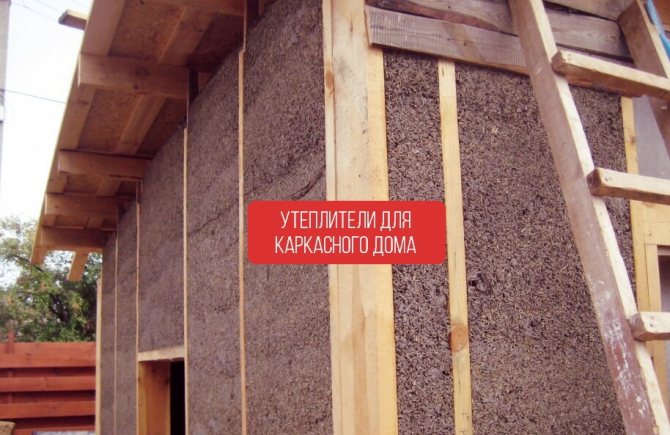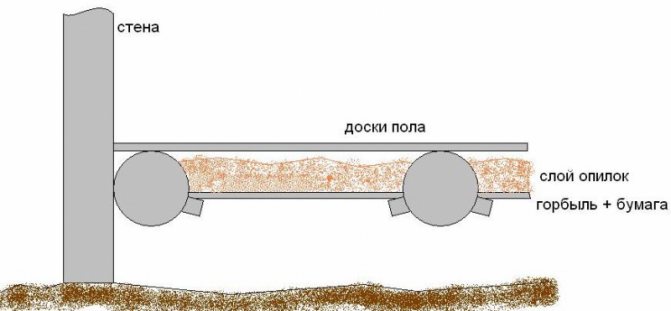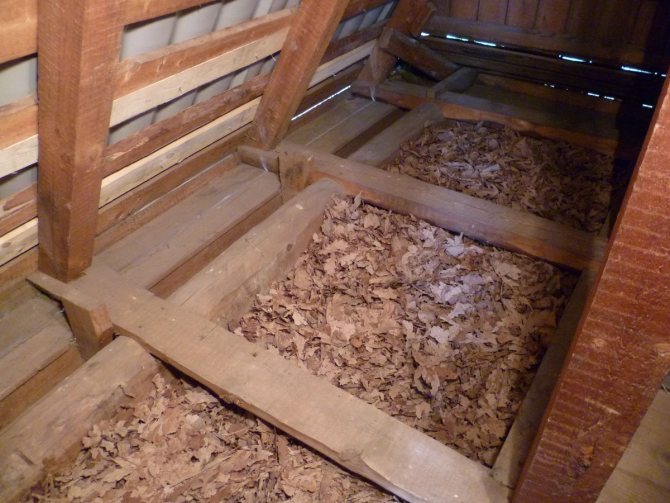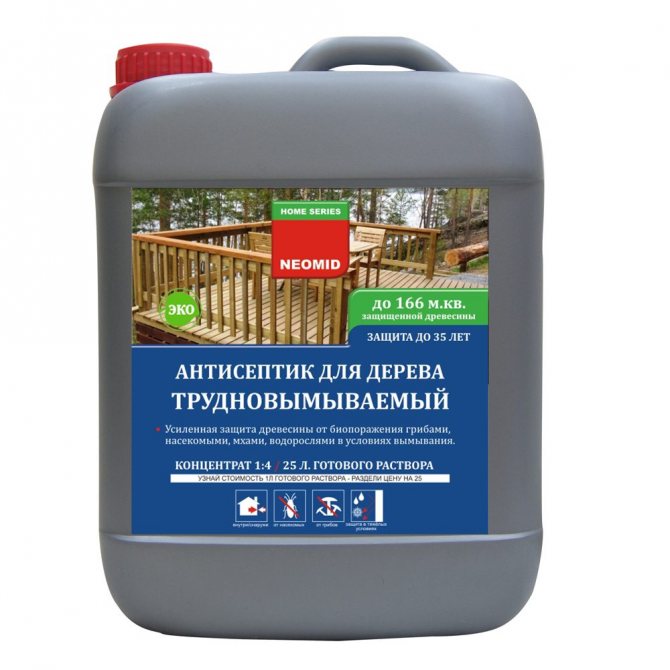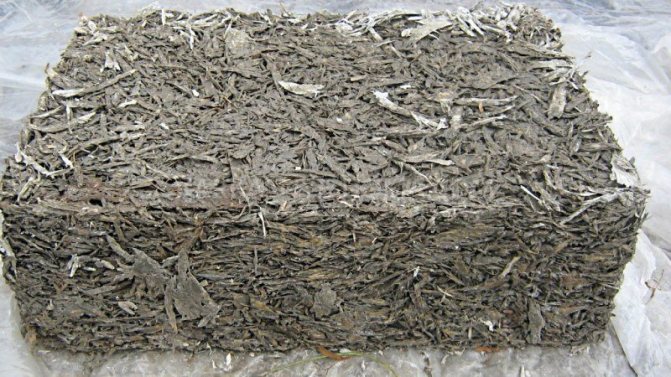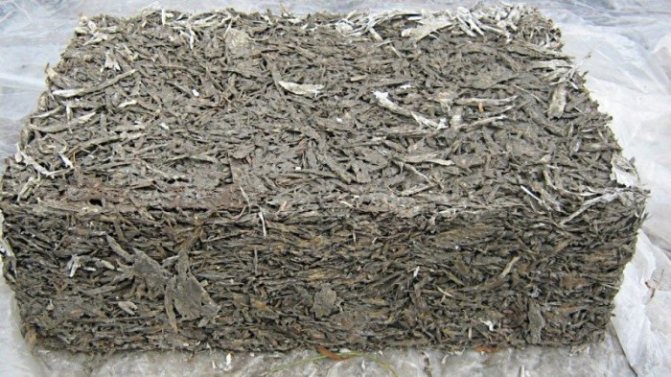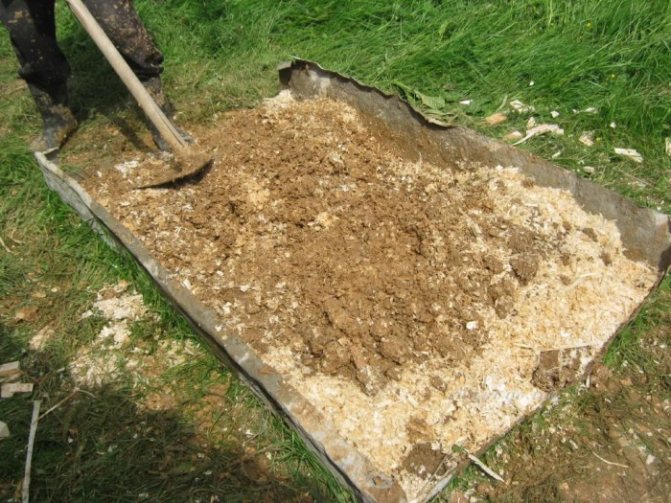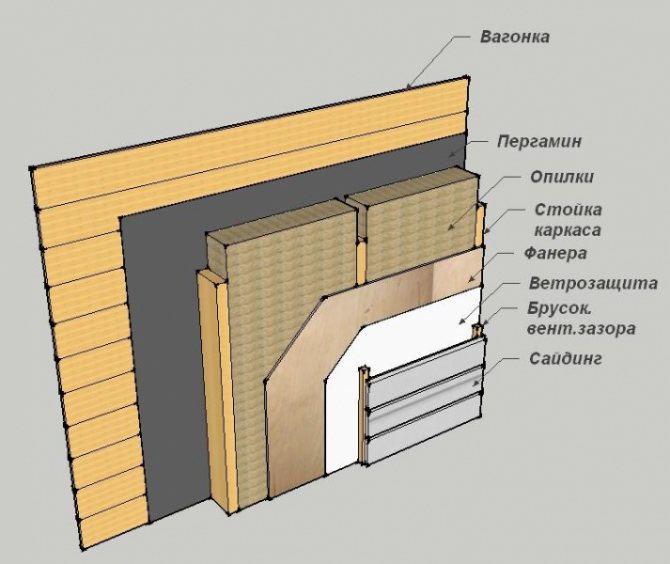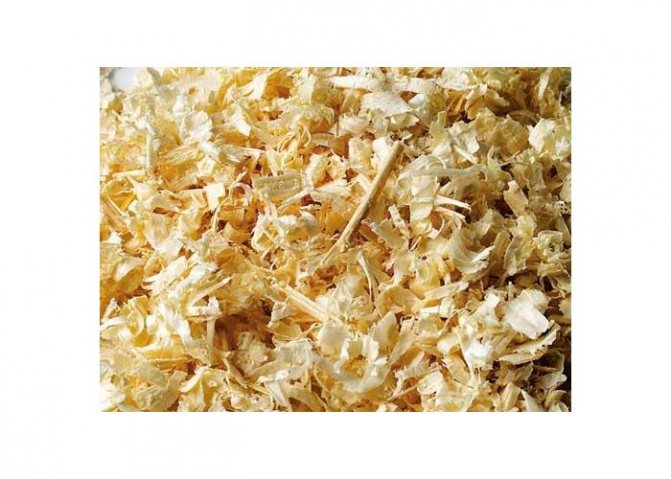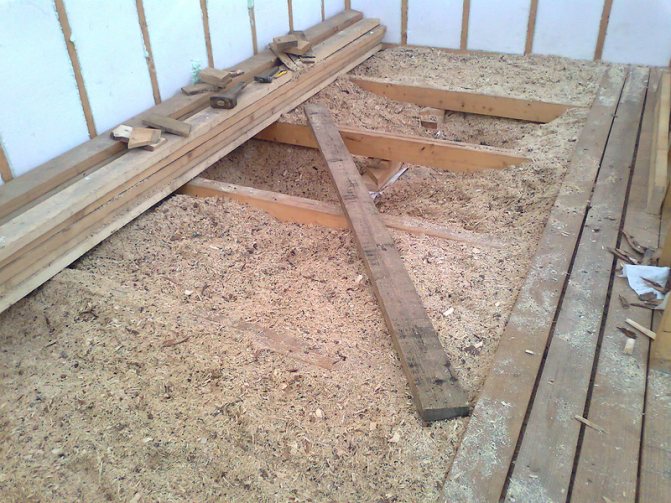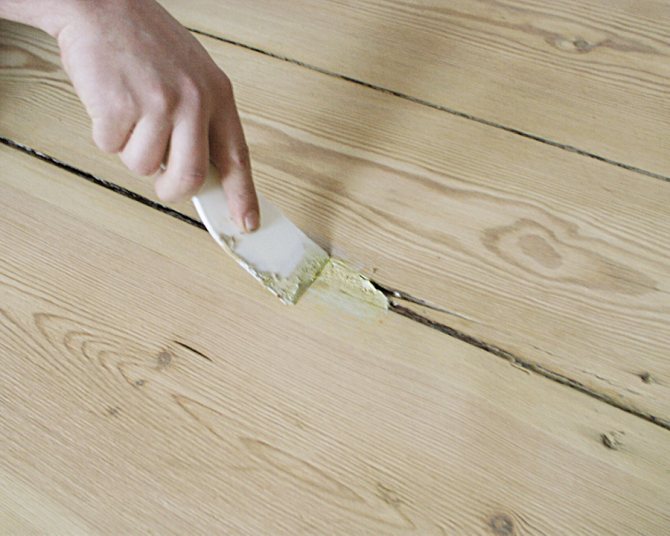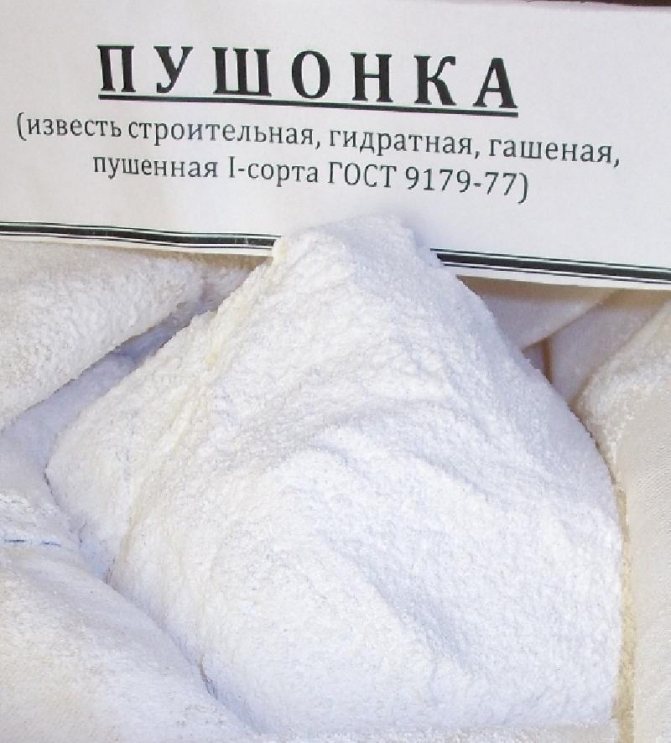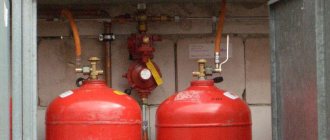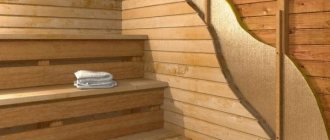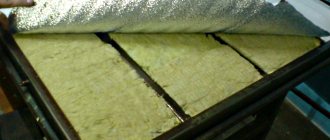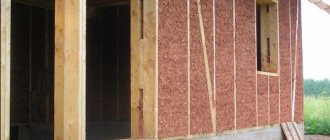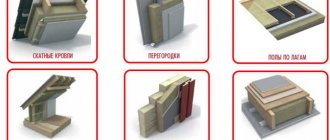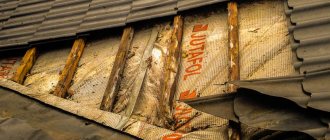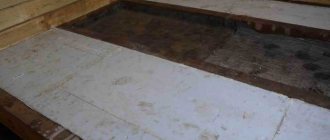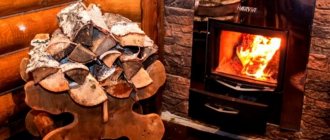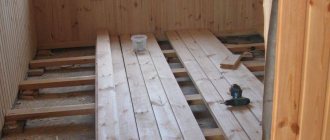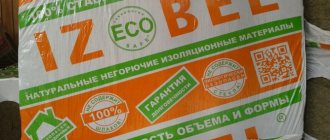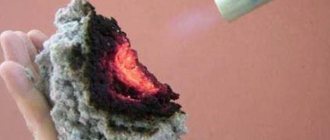The shavings remaining after wood processing are called sawdust. Floors, roofs and other surfaces have been insulated with them for a very long time, they perfectly allow you to keep heat, wood resins are released from them.
Ceilings in old houses are made of a mixture of sawdust and clay, they serve for a long time without any damage.
In industry, wood blocks, pellets, sawdust concrete and wood concrete are produced on the basis of sawdust. Excellent thermal insulation properties and low price are the main advantage of raw materials. They are often used in everyday life. There are two main areas in which sawdust is used:
- Agricultural.
- Construction.
Sawdust as insulation - modernity and tradition
Wood shavings are the most economical insulation material. Today there is a wide variety of building materials for insulating roofs, walls, floors between floors, ceilings and floors. However, the most inexpensive raw materials for insulation are sawdust and mixtures with shavings, they are suitable for almost any structure.
In the twenty-first century, many find it ridiculous to use sawdust as insulation, however, they give an amazing heat and sound insulation, as well as environmental friendliness and purity of wood.
Insulation of the stream with sawdust is a method that has long been used in the construction industry to obtain good thermal insulation. You can endlessly argue about the pros and cons of this option. In residential and commercial purposes, this material is often used in buildings. Naturally, a number of rules must be followed.
Hard-to-reach areas are covered with sawdust: first you need to mix them with other elements, after which compaction occurs. The result is a block of wood of the desired shape, which has a very good qualities... Sawdust as insulation for the house is properly prepared.
First, they need to be treated with an antiseptic, then dry well and mix. This is done to protect the thermal insulation system from pests. Walls, attics, floors and areas that are difficult to access are insulated with sawdust without impurities, provided that there is no possibility of using another insulation.
Insulation with sawdust has disadvantages:
- if the sawdust is free of impurities and has not been processed, they are flammable;
- rodents also reproduce in them.
Therefore, cement, gypsum or lime is added to the sawdust and moistened with an antiseptic solution. This mixture is non-flammable and rodents avoid it.
Insulation of one-story houses
Insulation with sawdust is often used for one-story houses, frame type, if the construction is carried out independently. To do this, you need to prepare:
- Cement.
- Sawdust.
- Lime.
- Watering can.
- Wood antiseptic: boric acid or copper sulfate.
- Shovel or stirrer.
- The container where the mixture will be poured.
The thickness of the layer depends on the average annual temperature and the purpose of the building... If the goal is to live only in the summer, then twenty-five centimeters of overlap and a wall of fifteen centimeters will be enough. If year-round residence is envisaged, then the layer should be thirty centimeters. To do this, you need to add racks to the frame, forming a larger volume of backfill.
Areas where chimneys and electric wires pass must be insulated with materials that are fire resistant. It is recommended to remove electrical wiring into the pipes, while the pipes must be metal, and their wall thickness must be at least 3 millimeters. Places increased fire hazard - sockets and switches must be laid out with non-flammable materials.
No vapor barrier is required, as excess moisture is absorbed by the cements in the mortar. The mixture is not strong enough if the sawdust is fresh, because they contain substances that do not allow cement to bind with water. Therefore, the sawdust must be moistened with liquid glass or let them stand for two months.
Liquid soundproofing for walls
OPERATING PROCEDURE
1. BASIC PROVISIONS.
1.1 Application instructions contain a step-by-step description of the processing process
noise insulation "Blockade" of surfaces made of the following materials: Concrete, brick, foam block,
metal, corrugated board, gypsum board, LSU, plywood, OSB, etc.
1.2 The materials used for protection must meet the requirements
relevant technical documentation and comply with TU.
1.3 An important condition for confirming the quality of the material is the presence of an accompanying
passports for each batch. It is also obligatory to have labels of the manufacturer's organization for all containers.
2. PREPARE THE FOLLOWING MATERIALS AND EQUIPMENT.
2.1 Paint brushes, the dimensions of which must correspond to the area of the processed
roofs.
2.2 Spatulas of different sizes.
2.3 Equipment - manual or electromechanical - for surface cleaning.
2.4 Abrasive tools and materials: sandpaper, metal brushes.
2.5 Airless spray gun (Graco, Wagner, etc.)
2.6 Materials for application
3. SURFACE PREPARATION.
3.1 To treat the surface for applying the "Blockade" sound insulation, you should
clean thoroughly to be coated.
3.2 Carefully clean the surface, seams, joints, grooves, protrusions.
3.3 The next step is to remove dust from the surface to be treated.
(with a vacuum cleaner, etc.).
3.4 Application temperature should not be colder than +5 ° С…. +35 ° C.
4. APPLICATION OF THE PRIMER.
4.1 For better adhesion of noise insulation to the surface, the area should be
prime, for which you can use the composition of the Primer "Blockade". Theoretical
the consumption of the primer is 200 g / m2
4.2 The primer is applied to the area with a brush or roller in one layer, while
problem areas are carefully processed: corners, joints, grooves. When
if necessary, apply a second coat after the first has dried.
4.3 At a temperature regime of + 20 ° С and a relative humidity of 80 ± 5%, the time
drying of one layer will take about one hour. Drying time under other conditions
will change.
5. APPLICATION OF THE BASIC LAYER OF NOISE INSULATION.
5.1 Work should be carried out in dry weather with optimal humidity (otherwise the time
drying will increase significantly)! Do not process wet surfaces - before
work it is imperative to clean them, dry and dust them!
5.2 Work should be started with the composition being thoroughly mixed. If the composition
too thick to be applied with a brush, roller, or airless
spray, Xylene should be used as a thinner. Diluent
apply in small quantities, achieving an optimal consistency for application
brush, roller, spray. Other thinners are not recommended.
5.3 For spatula application, a Thickener must be used. Thickener
applied in a ratio of 1:15. After mixing the base composition and the thickener
it is necessary to withstand the composition for 60-180 minutes, achieving an optimal state
for application.
5.4 The composition is recommended to be applied with a brush with stiff bristles, a spatula or
spray in several layers.
5.5 Each subsequent layer is applied in a direction perpendicular to
the previous one.
5.6 To check uniform application, use a thickness gauge such as
"Comb"
5.7 Material consumption will depend on the method of application, as well as on the surface itself
- its condition and relief, but on average it will be 1.25-1.5 kg. with a layer thickness of
1mm.
5.8 At the end of the work, the tools are cleaned and rinsed with Xylene or
solvent R-4.
6. SAFETY REQUIREMENTS.
6.1 Soundproofing composition "Blockade" according to the GOST classification refers to 3
hazard class.
6.2 During work, use personal protective equipment: glasses, armbands,
apron, respirator (in the absence of ventilation).
6.3 The storage and use of the waterproofing coating is not related to compliance
special safety requirements, since it is fire and explosion proof.
6.4 Transportation and storage of the waterproofing coating must be carried out in
tightly closed containers at a temperature not lower than -15 ° C and not higher than + 35 ° C.
6.5 Working with noise insulation does not require special knowledge, it is enough to go through
instruction on application.
7. CRITICAL SITUATIONS:
7.1 Sound insulation in a liquid state is washed off with Xylene or R-4. Also for cleaning,
if the composition is spilled, it is recommended to use an absorbent material: paper,
sand, rags, sawdust.
7.2 If the product gets into the eyes, they should be rinsed with running water until it disappears.
feelings of discomfort, otherwise you should immediately consult a doctor.
In case of contact with skin, clothes, wash with soap and water.
How to carry out the insulation correctly
For backfilling, a solution is needed, which is prepared as follows: ten buckets of sawdust, one part of cement and half or one bucket of lime. After that, an antiseptic is diluted in the water and it is necessary to spray this water with the help of a watering can for the garden.
After the mixture has been stirred, try to squeeze it with your hand. If a the lump did not crumble and the water has not flowed out, which means the mixture is ready. Then the vestibule is covered with sawdust layer by layer, and the necessary places in the amount of the required amount. The blocks mature for at least two weeks, while the room must be regularly ventilated. You need to wait a couple of weeks after the filling has occurred and make sure that all the voids are filled in and, if necessary, the missing is filled up.
With the help of sawdust, it turns out good plaster: add cement, clay, water and newsprint to them. This plaster is used for interior work. Also, sheets of the desired size are made from this mixture, they are made in molds, they need to be tamped and given time to ripen. Sheets are used for thermal insulation at the discretion.
The technology of laying sawdust insulation on the ceiling
After mixing the mixture, the resulting mass is poured from above from a watering can with a solution of copper sulfate or boric acid. Water for the solution is taken at the rate of 5 to 10 liters. Thorough mixing of the mixture and solution should lead to the formation of a dense lump that does not fall apart and does not release liquid when pressed by hand. Before laying, cardboard or glassine is placed over the entire area, then the cement-sawdust mixture is distributed, the solution is tamped into voids and other hard-to-reach places. Within two weeks, the insulation should be monitored: the good quality of laying is evidenced by the crunch when walking and the stability of the layer.
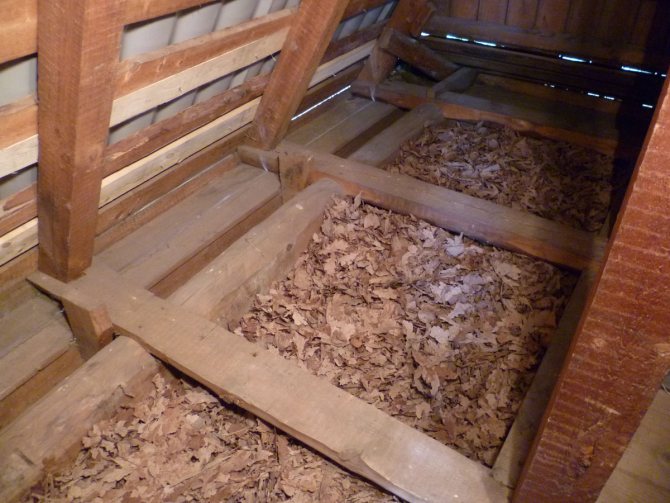
Sawdust can also be mixed with clay as ceiling insulation. Five buckets of clay are poured with water and mixed until a homogeneous mass is obtained. A clay mixture is added to a container with wood chips, until the composition is homogeneous, medium in density... Further, as in the previous version, the surface of the ceiling is covered with a film coating, fixed with a construction stapler, a clay-sawdust solution is applied with a layer of about 5 cm for summer rooms, and for winter rooms - up to 12 cm.A few days are enough for drying, after which cracks are corrected with clay.
Useful: Frame house: foam insulation
Floor insulation with sawdust
It is rare where you can find that the floor is insulated with sawdust without impurities, because the tree ignites very quickly and burns perfectly. To date, a large number of heaters are produced, which include sawdust: wood concrete, ecowool and sawdust pellets.
Ecowool allows by hand or by spraying do floor insulation. To do this, you need a blow molding system or turn to professionals. It is not profitable to purchase a device to use it once, however, if you do everything manually, the amount of expenses will increase by about forty percent.
In places where the temperature regime in winter does not drop below twenty degrees, it is recommended to make an insulating layer at least fifteen centimeters thick. If the cold is much stronger, the insulation should be thicker and for every five degrees it is necessary to add four centimeters of insulation.
Distinctive features of chipboard
Chipboards are made from wood shavings. With the help of this material, it is possible to insulate subfloors without making preliminary preparation. Thoroughly first the primer is leveled, and then a polyethylene film is laid for waterproofing.
After that, the chipboard must be laid on a plastic wrap. Chipboard, therefore, serves as insulation and as a final coating. The material is attached to the base with expanding dowels, anchors and in other ways.
In places where moisture increased chipboard cannot be used as a finishing coating: cellars and garages. Since the floors of the cellars are not exposed to high stress, chipboard can be glued to concrete with construction glue or molten bitumen. The temperature in the basement can be increased by making a double layer of insulation to prevent dampness.
Insulation of ceilings with sawdust
Insulation of ceilings is one of the most important stages. It is necessary to take a responsible approach to the issue of thermal insulation of the ceiling, because about twenty percent of the heat goes through the ceiling. Insulate the ceiling with sawdust much cheaper other materials for insulation.
Ceiling insulation. First, you need to cover the rough ceiling with glassine. Ceiling boards must be treated with fire protection. Sawdust that has been stored for a year or more is very suitable, otherwise there is a possibility that the cement will not set. The material must be odorless and dry.
Sawdust needs to be mixed in water-cement mortar, the ratio must be ten to one. Just enough water is needed to make the mixture a little wet. One and a half buckets of water need to be taken for ten buckets of sawdust. It is necessary to mix dry cement with wood materials, gradually adding water. As a result, the shavings are slightly greased in the cement.
The resulting mixture must be tamped and scattered with a two centimeter layer between the beams over the entire floor surface. It is better to do everything in the summer so that everything can dry out by autumn. A mixture that is completely dry will not slip underfoot, there may be a slight crunch.
Sawdust can be different in fraction. The less sawdust, the more water and cement you need. Also, more cement is required if the sawdust is fresh. However, the properties of the material for thermal insulation will become progressively lower as the amount of cement in the mix increases.
Soundproofing the ceiling in a house with wooden beams
A sound insulator in a house with wooden ceilings is laid between sheets of OSB or plywood.
The sound absorber can be:
- Minvata;
- Minplita;
- Basalt fiber;
- Technical felt.
For insulation and noise insulation of the ceiling in a wooden house, experts recommend using a membrane-pie
A pie membrane is made to absorb sound. It should not be connected to the overlap.It is installed independently at a distance of 10 cm from the ceiling. The result is something that looks like a suspended ceiling.
The membrane is attached around the perimeter of the room. If it is screwed to the ceilings, the sound insulation effect will be lost.

